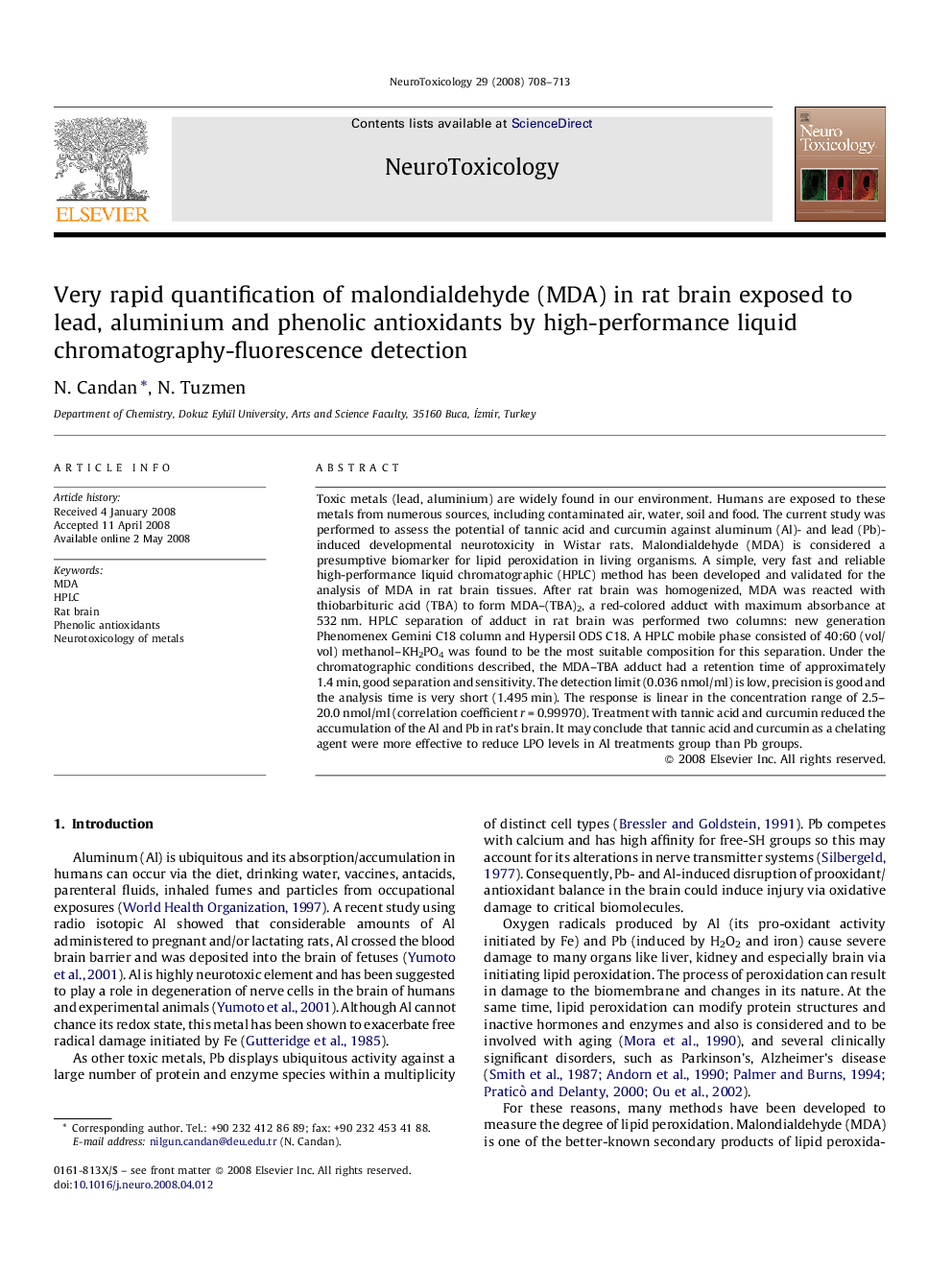| Article ID | Journal | Published Year | Pages | File Type |
|---|---|---|---|---|
| 2590329 | NeuroToxicology | 2008 | 6 Pages |
Toxic metals (lead, aluminium) are widely found in our environment. Humans are exposed to these metals from numerous sources, including contaminated air, water, soil and food. The current study was performed to assess the potential of tannic acid and curcumin against aluminum (Al)- and lead (Pb)-induced developmental neurotoxicity in Wistar rats. Malondialdehyde (MDA) is considered a presumptive biomarker for lipid peroxidation in living organisms. A simple, very fast and reliable high-performance liquid chromatographic (HPLC) method has been developed and validated for the analysis of MDA in rat brain tissues. After rat brain was homogenized, MDA was reacted with thiobarbituric acid (TBA) to form MDA–(TBA)2, a red-colored adduct with maximum absorbance at 532 nm. HPLC separation of adduct in rat brain was performed two columns: new generation Phenomenex Gemini C18 column and Hypersil ODS C18. A HPLC mobile phase consisted of 40:60 (vol/vol) methanol–KH2PO4 was found to be the most suitable composition for this separation. Under the chromatographic conditions described, the MDA–TBA adduct had a retention time of approximately 1.4 min, good separation and sensitivity. The detection limit (0.036 nmol/ml) is low, precision is good and the analysis time is very short (1.495 min). The response is linear in the concentration range of 2.5–20.0 nmol/ml (correlation coefficient r = 0.99970). Treatment with tannic acid and curcumin reduced the accumulation of the Al and Pb in rat's brain. It may conclude that tannic acid and curcumin as a chelating agent were more effective to reduce LPO levels in Al treatments group than Pb groups.
